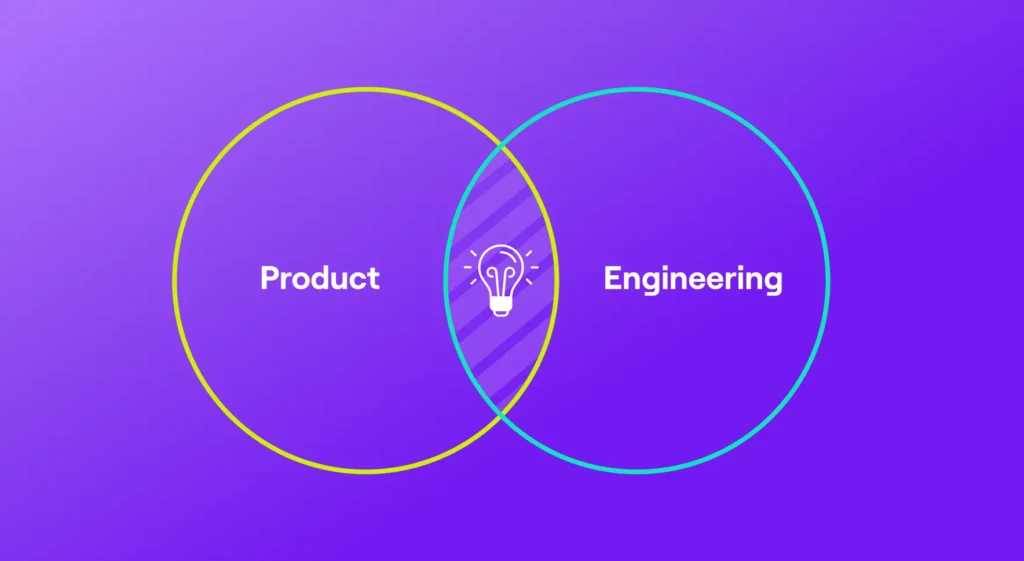Swarmia has made a name for itself in the engineering management space, competing primarily with Jellyfish, LinearB, and GitLab. With its sleek interface and promise of data-driven insights, Swarmia has certainly attracted attention.
But don’t be swayed by their flashy dashboards and buzzword-filled marketing, because the Swarmia user frustration is real.
Swarmia’s ability to deliver meaningful, actionable insights and truly integrate with complex development workflows has come under scrutiny as teams grow and demands increase. In this guide, we’ll explain why engineering leaders are looking beyond Swarmia for their team management needs.
Scroll down to see a list of the most popular alternatives to Swarmia, along with their top features. Whether you’re dealing with Swarmia’s limited customization options, struggling with its steep learning curve, or just looking for better value for your money, we’ve got you covered.
Why look for an alternative to Swarmia?
Consider the following reasons why Swarmia might not meet all your needs:
- Pricing structure: Swarmia’s per-developer pricing model can be costly for larger teams. Some alternatives offer more flexible pricing, including free plans for smaller teams or startups.
- Feature limitations: While Swarmia effectively connects engineering metrics with business outcomes, its feature set can be limited when measured against other tools. Other more suitable options exist for in-depth code quality analysis or automated code reviews.
- Integration constraints: Swarmia integrates with many tools but likely doesn’t cover your entire tech stack. This can hinder workflow streamlining efforts.
- User experience: Some users find Swarmia’s interface and onboarding process challenging. If you prioritize user-friendliness, other alternatives discussed below will likely make your life easier.
- Data privacy and security: Swarmia’s data privacy and security measures may be insufficient for highly regulated industries or specific data residency needs.
- Metric focus: While DORA metrics are valuable, they may not encompass all your team’s needs. Some Swarmia alternatives offer a wider range of metrics and insights.
- Customization options: Swarmia’s pre-defined metrics and reports tend to lack the flexibility to track unique KPIs or provide tailored insights.
Here’s what some users have been saying about Swarmia:
- “I wish the org setup was easier and more intuitive.”
- “It’s a bit slow to load most of the time.”
- “Great product, ridiculous pricing.”
Key features to look for in a Swarmia alternative
When evaluating Swarmia alternatives, you must ensure your chosen option incorporates several key features that will impact your team’s productivity. Here are the essential features to look for:
Engineering Metrics Tracking
Your Swarmia alternative should offer comprehensive tracking of both DORA and SPACE metrics.
DORA metrics (Deployment Frequency, Lead Time for Changes, Mean Time to Recovery, Change Failure Rate) provide valuable insights into your team’s delivery performance and operational efficiency. SPACE metrics (Satisfaction and Well-being, Performance, Activity, Communication and Collaboration, Efficiency and Flow) offer a more holistic view of developer productivity and well-being.
Look for tools that track these metrics and provide context and benchmarks. The ability to customize metrics and create your own KPIs is also valuable, as it allows you to tailor the tool to your team’s specific needs and goals.
Workflow Integration
A good Swarmia alternative should integrate effortlessly with popular version control systems (like Git), project management tools (such as Jira), and CI/CD pipelines. The tool should be able to capture data from these various sources automatically, without requiring manual input or changes to your team’s established workflows.
Actionable Insights and Recommendations
Raw data alone is not enough. Look for tools that go beyond simple data presentation to provide clear, actionable insights.
These insights should highlight bottlenecks in your development process, identify areas for improvement, and offer specific recommendations to enhance efficiency. The best alternatives will use AI and machine learning to analyze patterns in your data and provide predictive insights.
For example, they might flag potential delays before they occur or suggest process improvements based on successful patterns observed in high-performing teams.
Visualization and Reporting
Data visualization is key to understanding complex metrics and trends at a glance.
Look for tools that offer customizable dashboards and reports. These should allow you to track key metrics, visualize progress over time, and easily share insights with stakeholders. The ability to create role-specific dashboards is particularly valuable.
For instance, a team lead might need a detailed view of individual developer metrics, while a CTO might prefer a high-level overview of project health and business impact.
Work Breakdown & Allocation
Look for tools that provide clear visibility into time spent on new features, maintenance tasks, and addressing technical debt. This feature should help you identify workload distribution imbalances and make data-driven resource allocation decisions.
For example, if you notice that excessive time is being spent on maintenance tasks, you might decide to allocate more resources to refactoring or upgrading your infrastructure.
Collaboration & Feedback
Look for features that facilitate communication and feedback within your development team.
This might include shared working agreements, real-time feedback loops, and tools for identifying and addressing blockers. Some advanced features to consider are automated code review assignments, team-based performance metrics, and integration with communication tools like Slack.
Security & Compliance
Given the sensitive nature of development data, robust security measures are non-negotiable.
Look for tools that offer end-to-end encryption, role-based access controls, and regular security audits. Compliance with relevant data regulations is also crucial, particularly if you’re in a regulated industry or handle sensitive data. Ensure that any tool you consider complies with standards relevant to your industry, such as GDPR, HIPAA, or CCPA.
Additionally, consider whether the tool offers features like data residency options or the ability to self-host, which might be necessary for companies with strict data sovereignty requirements.
The 14 Best Swarmia Alternatives and solutions for engineering teams
1. Jellyfish
Jellyfish is an engineering management platform that provides visibility into engineering work, enabling data-driven decisions and alignment with business goals. It seamlessly integrates with existing tools to collect data on work patterns, code changes, and project management activities. This empowers leaders to understand team productivity, identify bottlenecks, and optimize resource allocation.
Key features of Jellyfish:
- Automated data collection from existing tools
- Work breakdown and allocation visibility
- Cycle time analysis
- Team health metrics
- Goal tracking and investment analysis
- Customizable dashboards and reports
- Data-driven insights and recommendations
- Feedback and recognition mechanisms
Why companies choose Jellyfish over Swarmia:
- Extensive metrics with automated data collection without disrupting existing workflows
- Hyperresponsive and involved in customer service with the project incorporating feedback
- Improved employee motivation and focus thanks to clear comparison with peers
- Customizable dashboards and reporting for tailored insights and team collaboration
- Deeper focus on developer experience and team health
- Offers a free plan for small teams, potentially more cost-effective
- Offers helpful insights
- Valuable for picking wildcat prospects and confirming traffic
- Great for monitoring digital channels
| “No other tool pulls together every aspect of the development process to create projections of this quality. There’s nothing close on the market, nothing nearly as effective or accurate.”
– Adam O’Dell, Director of Program Management, CHG Healthcare |
2. LinearB
Description:
LinearB is a team productivity and performance monitoring tool that uses real-time data to help software development teams optimize their workflow and delivery processes. It integrates with platforms like GitHub and Jira, providing actionable insights.
Key Features:
- Tracks cycle time and bottlenecks in real-time.
- Offers code review insights for improving delivery speed.
- Integrates seamlessly with DevOps tools like GitHub, GitLab, and Jira.
Limitations:
- Setup can be complex and time-consuming.
- Steep learning curve and metric
- Missing integrations with some popular communication tools.
3. GitLab
Description:
GitLab is an all-in-one DevOps platform offering tools for the entire software development lifecycle. It enables teams to manage everything from source control to CI/CD pipelines and deployment, fostering collaboration and transparency.
Key Features:
- Complete DevOps lifecycle management in a single application.
- Built-in CI/CD automation for continuous integration and delivery.
- Excellent source control with powerful merge request workflows.
Limitations:
- Can be resource-intensive with poor search functions with large repositories.
- Interface can feel cluttered and overwhelming to new users.
- Some users report that performance declines with very large projects.
4. CloudBees
Description:
CloudBees is an enterprise DevOps platform that provides CI/CD capabilities on top of Jenkins. It is designed for teams looking to automate their software delivery processes at scale, with additional security and governance features for large organizations.
Key Features:
- Supports enterprise-grade CI/CD automation.
- Offers security and compliance features tailored to enterprise needs.
- Extensive plugin support through the Jenkins ecosystem.
Limitations:
- Many users complain about the high price point.
- It is difficult to configure and set up.
- Many users highlight the steep learning curve and complexity of Cloudbees
5. Haystack
Description:
Haystack is a productivity and analytics tool for software development teams that provides actionable insights into engineering processes. It helps track key performance metrics like cycle time, lead time, and code review time to identify bottlenecks.
Key Features:
- Real-time analytics for engineering teams.
- Helps track and improve cycle time and productivity.
- Integrates with tools like GitHub, GitLab, and Slack.
Limitations:
- Lacks deeper customizability in reports.
- Limited integration options with some project management tools.
- Some users find the learning curve a bit steep.
6. Code Climate Velocity
Description:
Code Climate Velocity is a software engineering intelligence platform that helps teams measure productivity and identify areas for improvement. It offers in-depth metrics on code quality, team efficiency, and workflow bottlenecks.
Key Features:
- Provides actionable metrics on code quality and delivery speed.
- Helps identify bottlenecks in the development process.
- Offers insights to improve team collaboration and efficiency.
Limitations:
- Some users find the reports overly simplistic.
- Limited integrations with non-standard DevOps
- Customization options for metrics and reports are limited.
7. Waydev
Description:
Waydev is an engineering analytics tool that helps development teams measure performance and productivity through data-driven insights. It integrates with GitHub, GitLab, and Bitbucket to provide real-time reports on code commits, pull requests, and more.
Key Features:
- Real-time tracking of engineering performance metrics.
- Offers insights into developer productivity and workflow bottlenecks.
- Supports integration with major Git platforms like GitHub and GitLab.
Limitations:
- Some users report a learning curve on how to best use Waydev.
- Load times can slow down workflows.
8. Pluralsight Flow
Description:
Pluralsight Flow, formerly known as GitPrime, is a developer analytics tool that helps engineering teams measure performance by analyzing their work output. It tracks key performance indicators like throughput, cycle time, and code churn.
Key Features:
- Tracks detailed developer performance metrics.
- Offers insights to improve code quality and team productivity.
- Integrates with tools like GitHub and Jira for data analysis.
Limitations:
- Users report occasional data synchronization
- Some users highlight a poor user interface as a significant drawback.
- Inefficient tracking of individual team members’ detailed reports.
9. Allstacks
Description:
Allstacks is a predictive forecasting and risk management platform designed for engineering teams. It aggregates data from various tools to provide insights into project progress, team productivity, and potential delivery risks.
Key Features:
- Predicts project risks and delays using real-time
- Aggregates data from multiple tools for comprehensive insights.
- Provides detailed analytics on team performance and productivity.
Limitations:
- Integration setup can be complex for non-technical users.
- Limited customization for specific metrics and data views.
- Some users report that the forecasting is not always accurate.
10. Typo
Description:
Typo is a developer productivity tool that helps teams track performance and identify bottlenecks in their workflows. It provides insights on code quality, team efficiency, and project progress through visual dashboards.
Key Features:
- Tracks productivity metrics in real-time.
- Provides visual dashboards for workflow and team efficiency.
- Integrates with popular development tools like GitHub.
Limitations:
- Reporting issues compared to competitors.
- Customization of dashboards is somewhat restricted.
- Some users report a lack of advanced analytics features.
11. Sleuth
Description:
Sleuth is a deployment tracking tool that helps teams monitor and optimize their software delivery processes. It integrates with popular CI/CD tools to provide real-time visibility into deployments and their impact on performance.
Key Features:
- Tracks deployment frequency and success rates.
- Offers real-time visibility into CI/CD pipelines.
- Integrates with tools like GitHub, GitLab, and Bitbucket.
Limitations:
- Some users report the tool isn’t worth the price tag.
- Convoluted pricing structure.
- Users have mentioned that integration and setup are complex.
12. GitView
Description:
GitView is an analytics tool designed to provide engineering managers with insights into their team’s performance. It tracks metrics like commit frequency, pull request size, and review time to help teams optimize their workflows.
Key Features:
- Offers insights into code review processes and team collaboration.
- Tracks key engineering metrics like commit frequency and cycle time.
- Provides visual dashboards for easy performance monitoring.
Limitations:
- Requires more additional features.
- Limited customization capacity.
- Limited integration options compared to competitors.
13. Athenian
Description:
Athenian is an engineering performance management tool that helps software teams optimize their development process by providing insights into code quality, team productivity, and delivery speed.
Key Features:
- Provides in-depth metrics on team productivity and code quality.
- Offers insights into workflow bottlenecks and areas for improvement.
- Integrates with GitHub and other popular development tools.
Limitations:
- Customers report poor customer support.
- Lacks customization options for advanced users.
- Limited integration support for non-standard development tools.
14. Oobeya
Description:
Oobeya is a productivity and collaboration tool designed for software development teams. It helps track team performance, project progress, and code quality through data-driven insights and visual dashboards.
Key Features:
- Tracks project progress in real-time with visual dashboards.
- Provides insights into team performance and code quality.
- Integrates with popular development platforms like GitHub.
Limitations:
- Some users report limited system intelligence.
- Requires more parameters as measurement thresholds between companies vary.
- Lacks deep customization options for dashboards and reports.
Jellyfish — The Leading Swarmia Alternative
After analyzing these 14 Swarmia alternatives, Jellyfish emerges as the top choice for engineering organizations aiming to enhance productivity and tighten alignment with business goals.
Jellyfish combines automated data collection, customizable insights, and a focus on both team performance and developer well-being. Its seamless integration with existing tools and actionable recommendations make it an effective solution for engineering management.
To experience how Jellyfish can improve your engineering management, request a demo today. Discover why Jellyfish is the leading Swarmia alternative in the market and how it can benefit your team’s performance.





